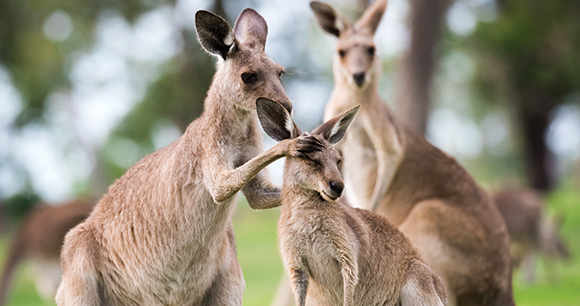Since 2010, an estimated 1.1 to 1.7 million kangaroos have been killed annually in what is considered the largest slaughter of terrestrial mammals in the world. (See AWI Quarterly, spring 2024.) Hunters, armed with high-powered rifles, pursue kangaroos under the cover of darkness, using bright lights to identify their victims. The animals are killed for their skins—used to manufacture high-end soccer cleats and other footwear—and meat to make pet food.

The hunt is poorly monitored and immensely cruel, with independent studies indicating that upwards of 40 percent of kangaroos are not killed quickly via a shot to the brain. In addition, approximately one-third of the kangaroos killed are females, who often have joeys (dependent young). Conservative estimates indicate that around 400,000 joeys are killed each year, with older joeys often dispatched by being slammed against the ground or a vehicle.
Kangaroos Alive, an Australian-based kangaroo protection organization formed in 2018 after the release of the award-winning documentary Kangaroos—A Love-Hate Story, has made great strides in its efforts to combat this industry. Working with its national and international partners, including AWI, Kangaroos Alive has already convinced nearly 20 companies to stop using kangaroo products, including industry giants Adidas, Reebok, Gucci, New Balance, Prada, Converse, Puma, Suzuki, Nike, and Salvatore Ferragamo.
The organization has also partnered with Australian First Nations organizations and elders to recognize and respect the cultural significance and sovereign rights of kangaroos, created World Kangaroo Day (October 24) to educate people about kangaroos, and developed a kangaroo coexistence campaign, as it continues to raise significant questions about the scientific basis of state and national kangaroo population assessments and management.